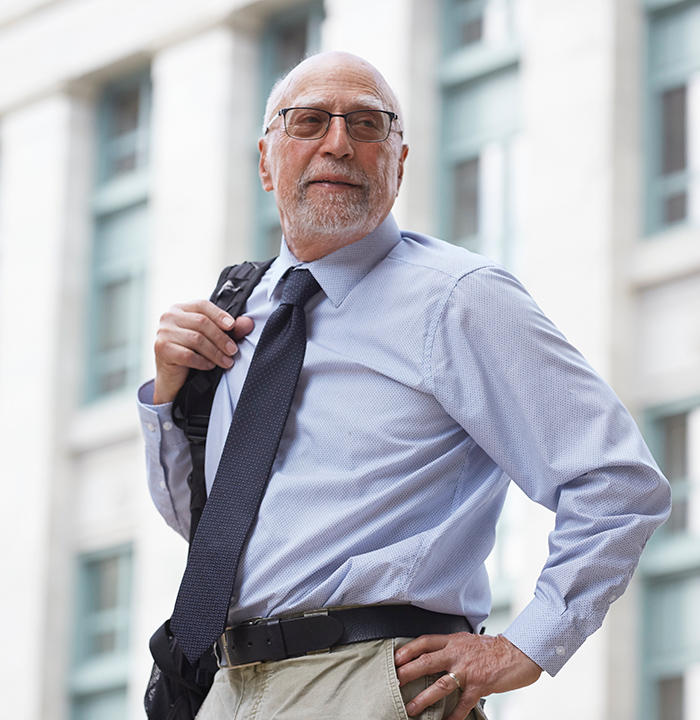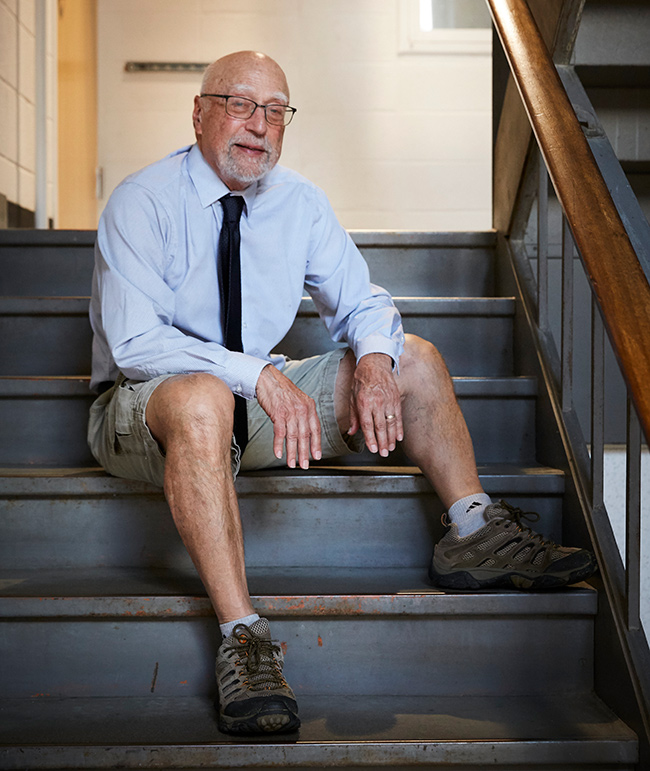
When Life Happens
I
t took two decades for Michael Retsky to realize that he had missed out on the “Wild West” era of physics. By the mid-1980s Retsky (PHYS ’61) had collected a series of patents related to electron microscope technology while working at Hewlett-Packard in Colorado Springs, Colorado, but he also came to recognize that the age of rapid discoveries and astonishing breakthroughs in his field had ended. For Retsky, the study of physics had matured, becoming a little less fun in the process.
The field of oncology was different, however, as Retsky would soon discover.
A colleague at HP whose wife was battling cancer recruited Retsky to join a small, informal team investigating cancer research. At first it was a side project for Retsky, who used HP’s computers to run cancer simulations.
“There were a lot of observations on issues like early detection, tumor growth, and chemotherapy, and some vague connections between them, but there was no numerical, mathematical way of tying it all together,” recalls Retsky, 80. “It was like physics over 100 years ago. It was wide open.”

The group of researchers soon began publishing in academic journals concerning a set of findings that ran contrary to industry consensus. The computer simulations indicated that tumors grew in inconsistent bursts after lengthy states of dormancy, which meant that the common practice of intensive chemotherapy immediately after surgery might not be the best course. Retsky left HP and joined the University of Colorado as a professor of biology, completing a career change he had begun in his 40s.
Then came an unexpected development: Retsky himself was diagnosed with cancer in 1994. True to his research, he rejected the traditional post-surgery blast of chemotherapy and instead followed a course of regular, low-dose treatments over two years, an approach now called metronomic chemotherapy.
To Retsky’s relief the treatment worked—he emerged healthy and reinvigorated, and suffered very few of the side effects often associated with chemotherapy. But when Retsky tried to pursue the large-scale studies needed to validate metronomic therapy, he came to another professional crossroads. He learned that the health care industry had little inclination to fund research related to inexpensive cancer treatments.
“For better or for worse, that’s the business model for oncology; the payback on investment is what drives new therapies. It’s not a good situation, but that’s the way it is,” says Retsky.
Joining the research staff of Harvard Medical School in 1998, Retsky refocused his academic energies on a related field of inquiry, again aided by computer simulation: the notion that the administration of a nonsteroidal anti-inflammatory drug (NSAID) just before primary tumor-removal surgery might prevent early relapses. The idea is that severe post-surgery inflammation can unlock dormant cancer cells and initiate their growth; in essence, the removal of one tumor sets the table for the growth of another.
At the time of Retsky’s initial exploration, “this was totally out of the normal range of thinking,” he says. Since then the idea has gained serious traction, and a series of independent studies and publications have validated Retsky’s research.
“We’ve moved from heretics to mainstream,” says Michael Baum, professor emeritus of surgery at University College London and a frequent Retsky collaborator. Baum says that Retsky’s physics-informed perspective constitutes a “revolutionary approach [that] could change the paradigm in which we work to overcome the complacency of the oncology establishment.”
That’s quite an impact for someone who had not even considered oncology during his formal education or during the first years of his career. Retsky, whose research interests remain focused on the administration of NSAIDs prior to cancer surgery, is now a research associate under the banner of the Harvard T.H. Chan School of Public Health. He says his career is an object lesson in the value of keeping your eyes and options open.
“Something could fall into your lap that might make a major change in your worldview, or in what you want to do with the rest of your life,” he says.